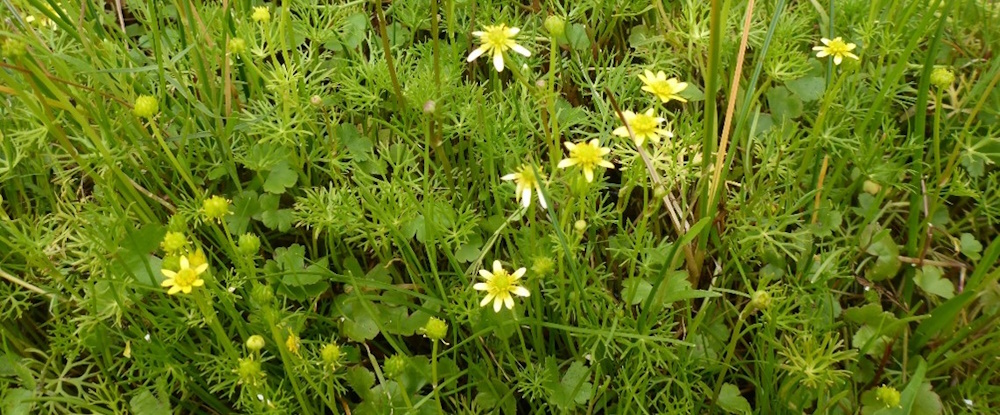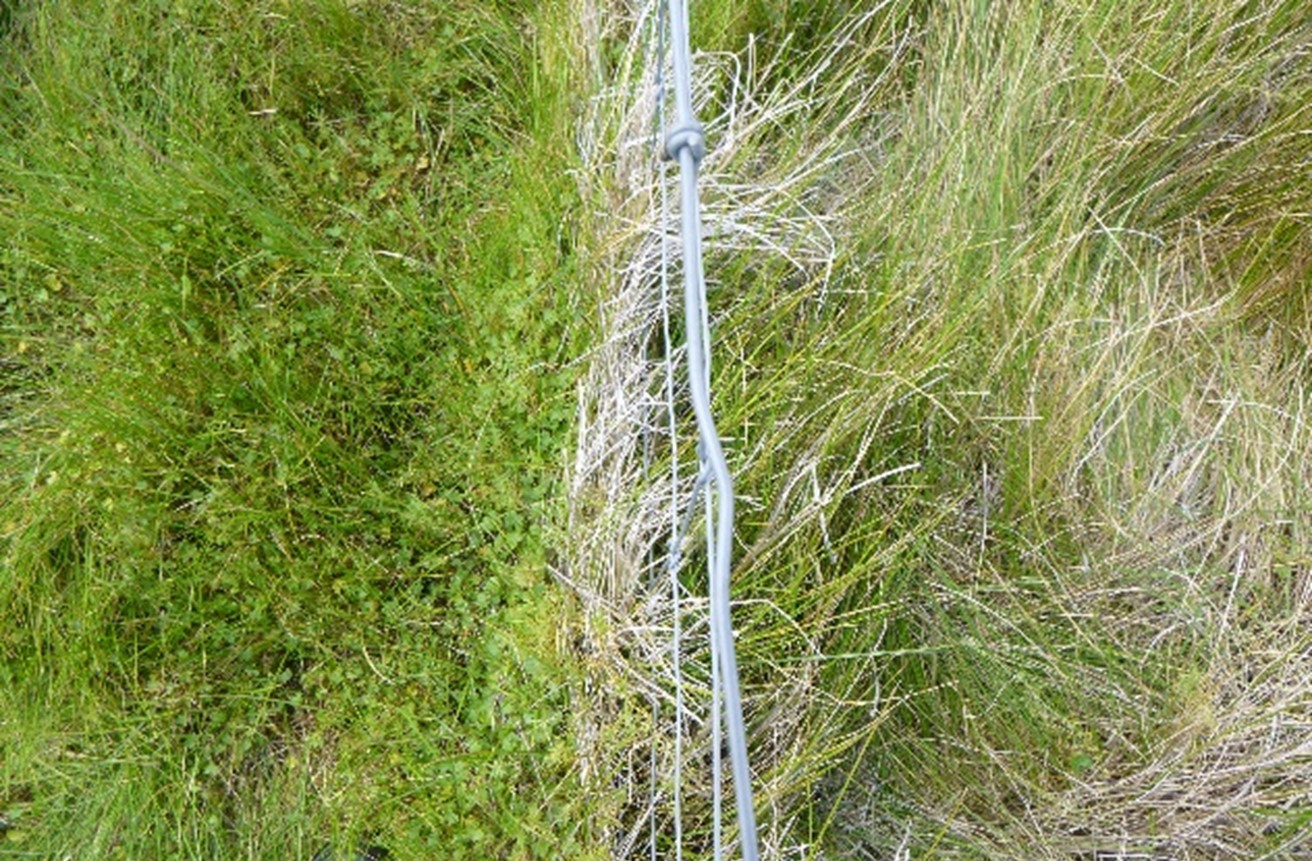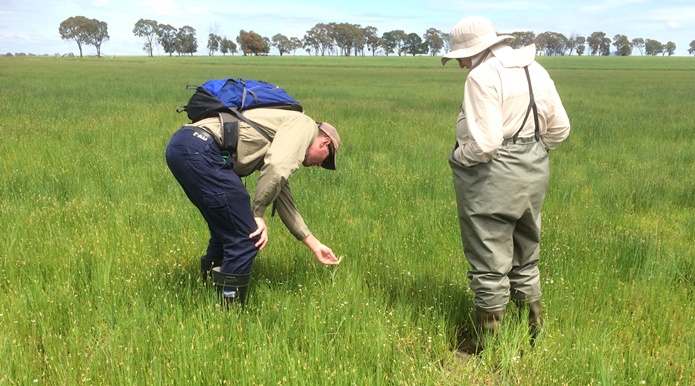In short
|

A diverse mix of plants within a temporary freshwater wetland - Photo by Dylan Osler
Grazing in wetlands
Victoria is home to over 62,000 natural wetlands with about three-quarters found on private land. Many are temporary freshwater wetlands which receive water periodically and experience cycles of filling and drying. They support diverse plant communities, improve water and soil quality, and provide food and shelter for aquatic animals.
Temporary freshwater wetlands are often productive and can be grazed in agricultural landscapes. Livestock grazing can negatively impact wetland condition and biodiversity, but it can also be beneficial in certain situations, if managed carefully.
In 2015, ARI developed guidelines to support grazing management decisions in Victorian wetlands (PDF 2.5 MB). However, further evidence was needed to build confidence in the principles underpinning these guidelines for Victorian wetlands.
What we did
ARI scientists evaluated the responses of wetland vegetation to grazing management at 21 trial sites across four catchment management authorities (CMAs).
Annual monitoring was carried out between 2017 and 2024 through a long-term project called the Wetland Intervention Monitoring Program (WIMP).
At each trial site, paired plots of about 0.25 Ha were established; one was open to livestock grazing and the other was fenced to exclude livestock.
Trial sites were exposed to variations in grazing management:
- Some sites were grazed by cattle and others by sheep.
- Some sites were grazed for short periods (weeks) and others are grazed for long periods (> 3 months to continuous) with various stocking rates.
Vegetation was surveyed before fencing and then annually for 5-6 years after fencing.

Variety of low growing herbs in the grazed plot (left of fence) and dominance of Glyceria australis (Australian Sweet-grass) and high leaf litter in the livestock exclusion plot (right of fence).
Key Findings
Grazed temporary freshwater wetlands on farms can hold high biodiversity value.
Under certain conditions, carefully managed grazing in temporary freshwater wetlands can benefit native vegetation when it:
- does not result in the loss of grazing-sensitive native plant species.
- prevents excessive leaf litter loads than can reduce plant species diversity
- prevents competitive introduced and native species displacing other species
High leaf litter loads following livestock exclusion in productive years can reduce diversity.
Management implications
Is grazing appropriate?
Grazing in temporary freshwater wetlands can be beneficial when it does not reduce the abundance of grazing-sensitive species and either:
(i) controls introduced species
(ii) prevents competitive species becoming dominant and excluding other species; or
(iii) reduces leaf litter loads so that native plants can establish.
Although grazing offers benefits in some wetlands, it also presents risks. Grazing is not recommended in wetlands where it can have severe impacts on hydrology (such as peatlands that are dominated by sphagnum moss) or where grazing impacts the habitat requirements of threatened fauna.
How much grazing?
In most cases where grazing is appropriate, short periods of grazing are recommended after native plants have set seed. This will prevent losses of grazing-sensitive species and declines in diversity that are expected under higher grazing pressure or poorly timed grazing.
The amount of grazing required to support plant diversity depends on the sensitivity of the species present and how productive the wetland is. In wet years, plants can be very productive, and a higher grazing pressure may be appropriate. In contrast, grazing may not be required in years of low productivity.
To optimise outcomes for wetland plants, grazing should be adaptive and guided by conditions on site. Depth and patchiness of leaf litter was found to be a useful indicator of when grazing could be beneficial.
Research impact
The findings of the WIMP grazing trials have highlighted the role grazing can play in managing wetland vegetation. The data so far has been consistent with the principles underpinning the guidelines and has not signalled a need to change the guidance currently available.
This 7-year monitoring program has improved our confidence in Victoria’s wetland grazing guidelines. It supports landholders and natural resource managers to make wise grazing management decisions.
How you can help
If you have wetlands on your property, they may hold high biodiversity values. To help care for your wetland:
- Use the wetland grazing guidelines (see publications) to assess if grazing is appropriate in your wetland and to find information on the best grazing management practices.
- Contact your CMA for advice on appropriate grazing strategies.

Researchers inspecting the condition of a wetlands.
Acknowledgments
The program was funded DEECA Water and Catchments and the National Landcare Program (NLP).
ARI delivered the program in partnership with DEECA Water and Catchments, CMAs and participating landholders. Landholders generously provided access to their wetlands and permitted the construction of livestock exclusion fences. External consultants contributed to annual surveys.
Publication and resources
- Wetland Intervention Monitoring Program (WIMP) - Understanding responses of vegetation to grazing management - Fact Sheet (2025)
- Morris, K. and Reich, P. (2013). Understanding the relationship between livestock grazing and wetland condition. Arthur Rylah Institute for Environmental Research Technical Report Series No. 252. Department of Environment and Primary Industry, Heidelberg, Victoria
- Peters, G., Morris, K., Frood, D., Papas, P. and Roberts, J. (2015). A guide to managing livestock grazing in Victoria’s wetlands. Decision framework and guidelines — Version 1.0. Arthur Rylah Institute for Environmental Research Technical Report Series No. 265. Department of Environment, Land, Water and Planning, Heidelberg, Victoria.
For more information contact Kay.Morris@deeca.vic.gov.au
Cameras set on time-lapse to track changes in vegetation, inadvertently captured many of the birds that are using the wetlands near Dundonnell, western Victoria. We've compiled the images into the video below titled 'Look who's visiting our wetlands', which can also be viewed on the Department YouTube channel:
Page last updated: 08/08/25